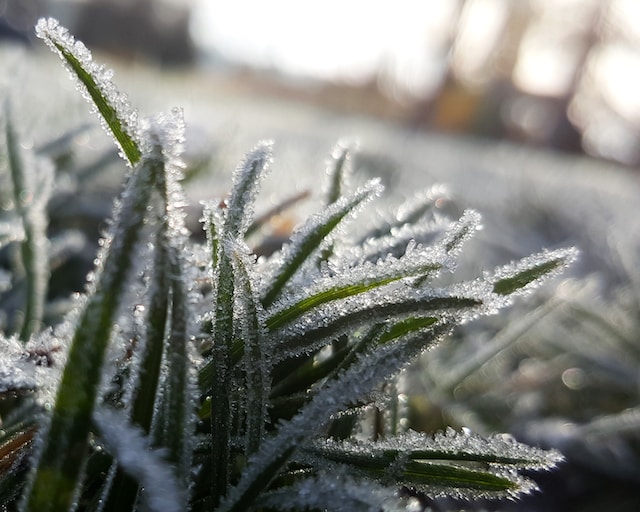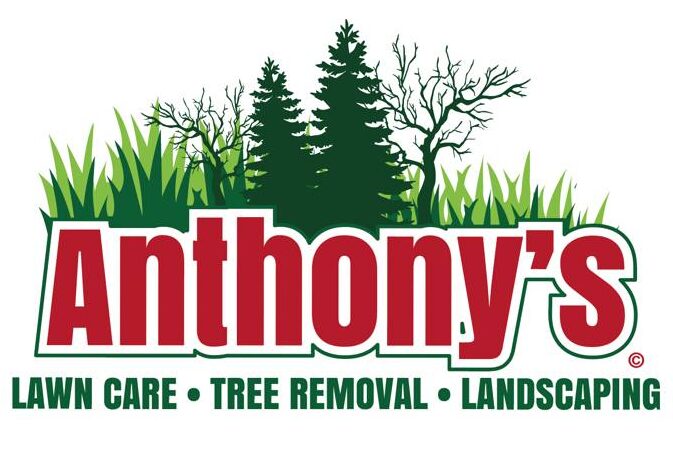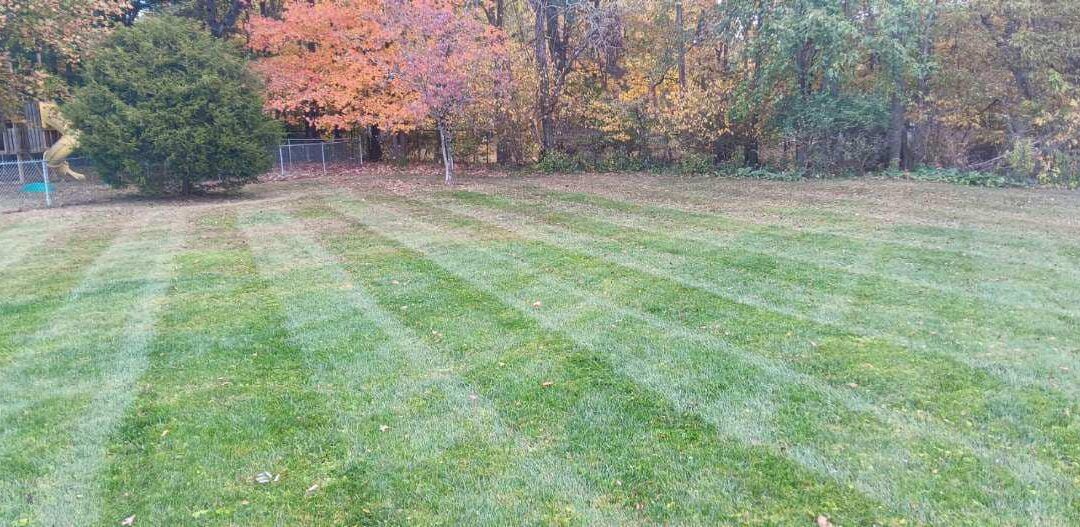Throughout the Midwest, we share a “four seasons” climate, ranging from 5 to 7 on the climate zone chart. Here in Southern Indiana, we have warm summers, cold winters, and periods of both wet and dry weather. This may be a delight for residents who enjoy lively seasonal changes, but it can be tough on your lawn. Maintaining a green lawn for most of the year is no simple matter with weather that changes so frequently. It’s no surprise that professional lawn care is common to overcome these challenges. Mastery of the seasons plays an important role in green Midwestern lawns.
You might be surprised to learn that winter lawn care can make a real difference if you want a lush, green lawn in the spring. Today, we’d like to share a few of our expert lawn care tips on winter steps to see your lawn become a beautiful green as the seasons change.
Understanding the Midwest Lawn in Winter
In the winter, most midwestern lawns are covered in snow or frost. If your lawn is visible, it will be brown. But like the trees, your grass is not dead, it is dormant. The best types of grass for midwestern lawns grow well in warm summers but also survive cold winters quite well. These grass varieties can withstand fluctuating temperatures in the spring and fall and will sleep peacefully below heavy snowfall.

Winter Lawn Care Tips
There is no need to worry about typical lawncare tasks in the Southern Indiana winter, because heavy snows and deep cold will put your lawn to sleep.
- Aeration: The best time to aerate in Southern Indiana is in the spring and fall.
- Mowing: Remember to winterize your mower, as you won’t need it until early to mid spring when your grass is growing again.
- Watering: There is no need to water most lawns in the winter in Southern Indiana, as the grass is dormant and there is often steady precipitation in the form of snow.
- Weed control: Weeds, like most other plants, are typically dormant in the winter. However, if there are a few stubborn weeds, winter can be a useful time to dig them out by the root.
Instead of considering mowing or watering, instead think about ways to avoid damaging your lawn in the winter.
- Use paved pathways and stepping stones instead of walking over the dormant grass.
- Don’t allow too much salt or de-icer to stray from the pavement into your yard.
- Treat any areas that have shown snow mold early to discourage reoccurrence.
Fertilization and Soil Health
Soil testing is crucial in midwest climates because the health of your grass depends on weather, care, and the nutrients available in the soil. In order to avoid a patchy or poorly flourishing lawn in the spring and summer, it can help to test your soil in the winter or early spring. This will allow you to prepare the right fertilizer when it’s time to aerate and fertilize as the season changes.
The best fertilizers for Southern Indiana lanws are high in nitrogen and low in phosphorous or potassium. Slow-release fertilizers also provide better results for grass than the alternative. Organic soil enhancements are also popular, such as making your own compost soil, testing and balancing the nutrients, and adding the result to your lawn.
Protecting Your Lawn from Winter Damage
- Preventing Ice Damage
- Ice damage occurs when the frost hits your grass too fast, without a protective and insulating level of snow. While you cannot control the outdoor freeze, you can minimize damage simply by not walking on your crunchy, frozen grass during the winter.
- Stopping Snow Mold
- Snow mold is a fungus that lurks in grass roots and comes to life during the first spring thaw – sucking the life out of patches of your lawn. You can fight it by breaking up thatch in the patches and laying down a protective fungicide.
- Minimizing Salt and Plowing Damage
- Using small snow barriers at the borders of your lawn can help prevent salt, de-icer, and piles of plowed snow from damaging the grass over the winter.
- Special Care for New Lawns
- If you have newly laid turf just before winter, make sure to leave it alone. Ideally, the lawn will have had time to settle and grow a little before the first frost. After winter hits, the best thing you can do is not walk on or disturb the grass.
Early Spring Prep: Lawn Transition in Southern Indiana
As winter begins to wane in Southern Indiana, it’s time to bring your grass back to life. After the melt, get out your aerator and help your soil breathe. Use a short metal rake to pull up thatch and further aerate the soil.

Then you will be in the right position to sprinkle fertilizer over your lawn to encourage early springtime growth and apply safe weed killer if you deem it necessary. This is also a great time to consider hiring a professional for a spring clean-up to ensure your yard is in tip-top shape for the season.
Advantages of Professional Lawn Care
Attentive seasonal maintenance is what makes a lawn in Bloomington and surrounding areas grow green, soft, and strong. Of course, not everyone has the time or talent for seasonal lawn care. You may also have more than just your lawn to contend with, such as seasonal bushes, flower beds, and planters that each require indvidual care. Professional lawn care can help you overcome Midwest-specific lawn issues and tailor services to your home’s unique landscaping needs.
You can trust that your lawn professionals will bring the tools and techniques unique to the region to ensure that your lawn thrives.
Master Winter Care for Your Midwestern Lawn
Winter-specific lawn care can make a world of difference to the beauty of your lawn in the spring, summer, and early autumn. If your lawn is not looking its best, you don’t have to begin the careful process to find and solve the cause. Instead, entrust your lawn to a professional lawn care service who can offer you regional expertise.
Reach out for a FREE estimate, and Anthony’s Lawn Care


Recent Comments